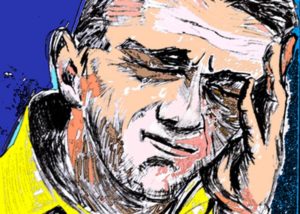
Over 30 million American experience painful migraines. For many migraine sufferers, the support and understanding of family members can make a world of difference.
Here’s what every migraine caregiver should know:
- Migraines are more than bad headaches.
Headaches are a nuisance, but migraines can be devastating. Learning how migraines affect your loved one is the first step to being a caregiver. Here are some symptoms to watch out for:
- Sensitivity to sounds and lights
- Throbbing headache
- Pain in one or both sides of the head
- Nausea or vomiting
- Inability to perform normal tasks
- Pain that worsens during exercise
Some people also experience migraine with aura. Aura is a visual disturbance that arises 15 to 30 minutes before a migraine attack. Common aura symptoms include flashes, zigzag lines and blind spots.
- Migraines need medical attention.
There are a variety of migraine treatments out there; make sure your loved one is taking full advantage of them. Schedule a appointment with a headache specialist, and speak with your doctor to find a regimen that works.
- Migraine-like pain might be something serious.
Not all head pain is a true migraine; sometimes it may indicate a more dangerous disease. Make sure to get your loved one to a hospital if s/he experiences any of the following:
- Headache after a head injury
- A sudden, extreme headache different from regular migraines
- A persistent headache that worsens after sudden movement, exertion or coughing.
- New migraine-like pain after the age of 50
- Headache with fever, rash, stiff neck, confusion, seizure, vision problems, numbness, weakness or difficulty speaking.
Do you or someone you love have migraines? See if you qualify for one of the Segal Institute’s clinical research studies on migraines.
Source: http://www.everydayhealth.com/headache-and-migraine/caregiving-role-in-migraine-relief.aspx

